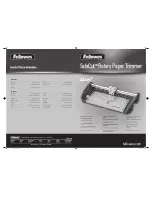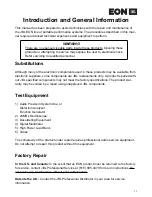
Torrey Pines Scientific, Inc.
35
APPENDIX A: Example Programming Scenarios
The programming functionality available in the model SC25 enables the user to define
up to 10 specific sequences and run the sequences automatically for a specific number
of cycles or infinitely. There are 5 possible programs available which means that up to
5 different 10step sequences can be defined.
Each program step is the value for the set point and the starting value for the
countdown timer. When the countdown timer reaches 00:00:00, and another program
step is available, the values for the next step are loaded until the last step is reached.
There are global settings which can modify the behavior of both the running and the
finished program. If MENU:Pgm Options, “Timer Waits for Pl Temp = SP” is set to “no”,
then each step timer will start to decrement immediately after the step is loaded. If it is
set to “yes”, then the timer will wait until the plate temperature is equal to the set point
temperature for that step before it begins to decrement. In other words, if set to “no”,
then the time to get to the set point and the time at the set point are combined in the
step time. If set to “yes”, the step timer value only refers to the time at the set point
temperature. The “wait until” feature is global meaning that when set, all steps in a
running program will wait until the plate temperature reaches the set point before the
step timer will begin to decrement. It is not possible to program so that some steps are
“wait until” and some steps are not.
If MENU: Timer Options, “Auto-Off” is set to “no”, then the unit will remain at the last
step set point value when the program ends. If it is set to “yes”, then the unit will enter
“Idle Mode” when the program ends which means that power will be removed from the
heater plate and the unit will naturally cool down or warm up as if it were unplugged (SP
will read “off”).
The “wait until” and “Auto-Off” features are global—they cannot be assigned to
individual steps. However, the Heater OFF mode is an available set point in each of the
program steps. Using the appropriate combination of global settings and step settings
offers flexibility in defining the behavior of a program both running and upon completion.
The following examples are provided to illustrate the settings for four sample
programming scenarios
.











































